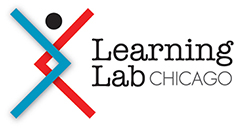5 Brain Myths Busted!
The brain: we all have one and use it daily, and yet, there’s so much we still don’t know about this complex organ. It’s not exactly a surprise that the brain remains a puzzle to us, though, as even neuroscientists still have much to uncover in their work. But while much of the brain remains a mystery, there are facts we do know about the brain. More specifically, there are myths about the brain scientists now know are false. Why is this important for parents? The more we understand about how the brain functions, the better we can help younger generations learn effectively. Read on to learn the top five brain myths that scientists have recently busted.
We only use 10 percent of our brain
While there are certainly times we don’t use our brain as much as we could, there’s no truth to the notion that humans use only 10 percent of their brain, according to the Scientific American. Actually, you’re probably using much more than just 10 percent of your brain while reading this article!
People are either left-brained or right-brained
Individuals are often categorized as being either “left-brained” or “right-brained,” meaning you’re either a creative person or prefer working with numbers. The reality is that we use both hemispheres, regardless of our personality.
Listening to classical music makes us smarter
It was once thought that listening to Mozart while studying improved test scores. In reality, however, students simply tested better because the music created a more enjoyable environment.
There are different types of learners
A big myth that has affected the way some schools teach is the idea that students learn differently. For example, some students are “visual learners,” while others learn best by listening. There is no evidence, however, to support that children require unique teaching plans.
Men and women are wired differently
There are some differences between men’s and women’s brains, most of them being related to size. There isn’t any evidence, however, to say that men are better at math and science, or that women excel at multitasking.
The more we learn about how brains operate, the better we can educate young kids. Keep these myths in mind (and remember they’re not true!) when searching for the most effective ways to teach your kids at home.

